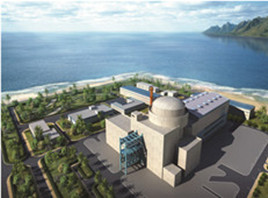Fujian
Fujian province sits at the southeastern coast of the Chinese mainland, covering an area of 121,400 square kilometers to the west of the Taiwan Straits, and with a sea area of 136,300 sq km. It has a population of 36.89 million. Under its jurisdiction, there are nine municipalities in addition to Pingtan Development Zone, comprising of 85 cities, counties and districts. The province has four distinct characteristics:
First, it's a province blessed with rich mountainous and maritime resources. It boasts a forest coverage rate of 63.1%, ranked first in China, and the most spots suitable for deep-water berths along its 3,752 km coastline.
Secondly, it is home to numerous well-preserved ecological systems. Fujian is endowed with a picturesque landscape and a highly habitable environment. It has quite a number of reputable tourist destinations such as the Wuyi Mountains, a world cultural and natural heritage site, Fujian Tulou, a world natural heritage site, and Taining, a world-renowned geo-park.
Third, it's a frontrunner in our reform and opening-up drive. Fujian has a long history of trading with other countries – Quanzhou City used to be one of the largest trading ports in the world and was the origin of the Maritime Silk Route in ancient times. Now, as one of the pioneer zones for comprehensive reform and one the first mainland provinces to open up to the world, Fujian features a highly market-oriented and export-led economy, as well as a viable private sector. It has become one of the economic powerhouses throughout the Chinese mainland, boasting rapid economic growth. Moreover, Fujian is also a major hometown of overseas Chinese – more than 12 million can trace their ancestral roots to Fujian.
Last but not least, it's closely linked to Taiwan not just by a narrow strip of water, but also by blood ties, common language and folk customs. 80% of the Taiwan people are of Fujian origin. They conduct frequent people-to-people exchanges and business links are always strong. The Economic Cooperation Framework Agreement (ECFA) between the two sides of the Straits offers big potential for future cross-Straits economic cooperation and exchanges.
Through these unique advantages and Fujian's status quo of development, in early 2004, Fujian unfurled its development strategy for building the Western Taiwan-Straits Economic Zone, which is characterized by an open economy, balanced development and overall prosperity. Such a move aims to facilitate the greater cause of overall nationwide development and national reunification. In May 2009, the State Council issued Opinions on Supporting Fujian in Accelerating the Development of Western Taiwan-Straits Economic Zone, laying out the development strategy and objective for the Zone, and setting forth supporting policy measures in detail.
Specifically, the objective is to turn the Zone into an area pioneering new approaches to promote cross-Straits exchanges and cooperation, a multi-purpose gateway to facilitate development in its neighboring areas, an advanced manufacturing base on the eastern coast, and a key tourist center with great natural and cultural interests. In March 2011, the State Council officially launched The Development Planning of Western Taiwan-Straits Economic Zone, another major step forward to fuel Fujian’s development after the promulgation of the 2009 Opinions on Supporting Fujian in Accelerating the Development of Western Taiwan-Straits Economic Zone. It will also clearly be a new catalyst for the development of the Zone.
Following on from more than 30 years of reform and opening-up, Fujian has witnessed rapid economic development. Three pillar industries have emerged in electronics and IT, petrochemical and machinery manufacturing, alongside the increasingly crucial tourism industry. In 2010, the province registered 117.85 million visits in total, among which 3.68 million were from outside the Chinese mainland, yielding a total income of 133.7 billion yuan, among which revenues in foreign currency hit $3 billion. Last year, its GDP reached 1.47 trillion yuan, a GDP per-capita of 40,025 yuan, aggregated financial revenues hit 205.6 billion yuan, and the total import and export volume reached $108.78 billion.

 Province Events
Province Events Major Events
Major Events Highlights
Highlights
